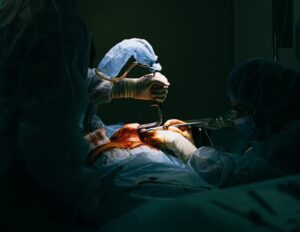Open cardiac surgery has been a cornerstone of cardiovascular medicine for decades, revolutionizing the field and saving countless lives. The procedure involves accessing the heart through a large incision in the chest, allowing surgeons to directly visualize and manipulate the cardiac structures. While minimally invasive techniques have gained popularity in recent years, open cardiac surgery remains crucial for complex cases and specific conditions. In this article, we delve into the realm of open cardiac surgery, highlighting unique advancements and innovative approaches that are pushing the boundaries of this time-honored procedure.
Advanced Imaging Technologies Enhancing Precision
With the advent of sophisticated imaging technologies, open cardiac surgery has experienced a significant leap forward in precision and accuracy. Surgeons can now utilize high-resolution 3D imaging, such as cardiac magnetic resonance imaging (MRI) and computed tomography (CT), to obtain detailed preoperative information about the heart’s anatomy and plan surgical strategies accordingly. These imaging techniques enable surgeons to anticipate challenges, identify potential complications, and tailor their surgical approach, resulting in improved outcomes and reduced risks for patients.
Customized Surgical Approaches for Complex Cases
Open cardiac surgery allows for a personalized and tailored approach, particularly in complex cases where multiple procedures may be required. Surgeons now have access to innovative techniques that combine traditional surgical methods with newer approaches, enabling them to address various conditions simultaneously. For instance, combined procedures like coronary artery bypass grafting (CABG) and valve repair or replacement can be performed during a single operation, minimizing the overall surgical impact and improving patient recovery.
Hybrid Procedures: open heart surgery
In recent years, a hybrid approach has gained popularity, integrating the benefits of open cardiac surgery with minimally invasive techniques. Hybrid procedures involve a combination of surgical and catheter-based interventions, enabling surgeons to tackle complex cardiac conditions while minimizing the invasiveness of the surgery. These procedures often involve collaboration between cardiac surgeons and interventional cardiologists, providing a multidisciplinary approach that maximizes patient outcomes.
interventions, enabling surgeons to tackle complex cardiac conditions while minimizing the invasiveness of the surgery. These procedures often involve collaboration between cardiac surgeons and interventional cardiologists, providing a multidisciplinary approach that maximizes patient outcomes.
Cutting-edge Technologies in Surgical Instrumentation:
Advancements in surgical instrumentation have played a crucial role in enhancing the efficacy and safety of surgery. Innovative tools, such as robotic-assisted surgical systems and minimally invasive access devices, have enabled surgeons to perform intricate procedures with increased precision and dexterity. Robotic-assisted systems offer enhanced visualization and maneuverability, allowing surgeons to perform complex cardiac repairs with smaller incisions and reduced trauma to the patient.
Enhanced Recovery Protocols
The evolution of open cardiac surgery extends beyond the operating room. Enhanced recovery protocols focus on optimizing patient care before, during, and after surgery, aiming to minimize postoperative complications and facilitate faster recovery. These protocols include preoperative optimization, refined anesthesia techniques, targeted pain management, early mobilization, and specialized cardiac rehabilitation programs. By implementing such protocols, the length of hospital stays has decreased, and patients experience improved overall outcomes and quality of life.
Conclusion
Open cardiac surgery continues to evolve and push the boundaries of what is possible in the realm of cardiovascular medicine. Through the integration of advanced imaging technologies, personalized surgical approaches, hybrid procedures, cutting-edge instrumentation, and enhanced recovery protocols, open cardiac surgery is poised to deliver even better outcomes for patients with complex cardiac conditions. As technology and medical knowledge progress, the field holds the promise of continued innovation, offering hope to individuals in need of life-saving interventions for years to come.